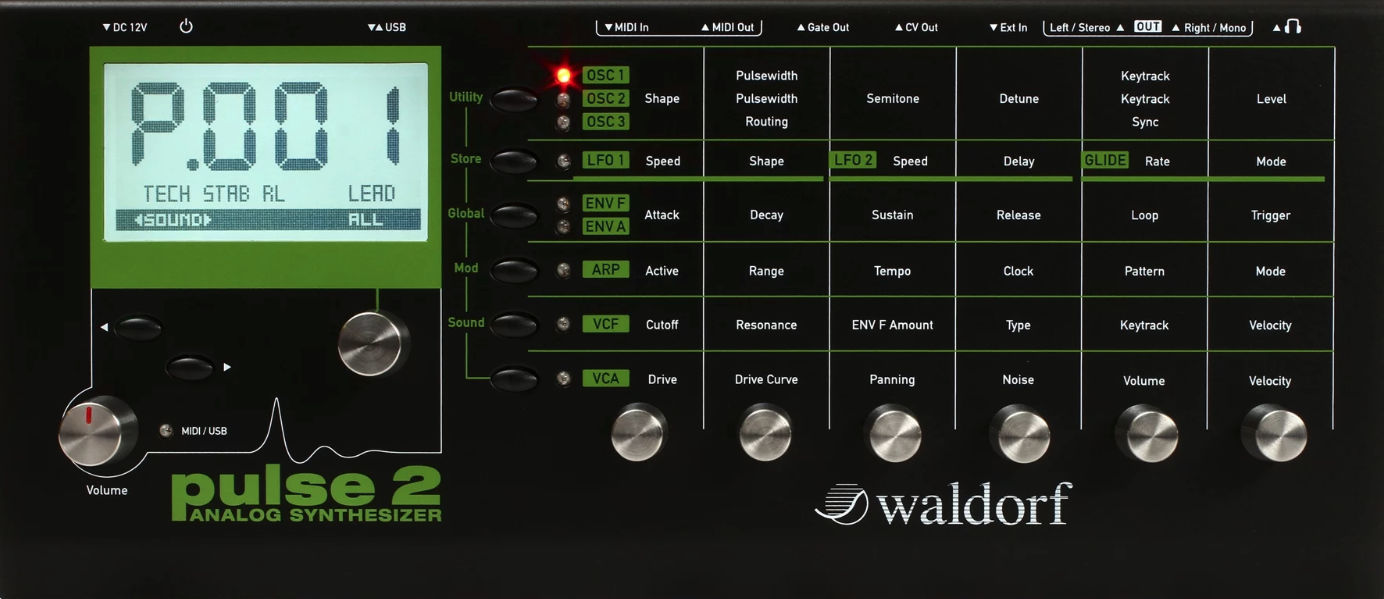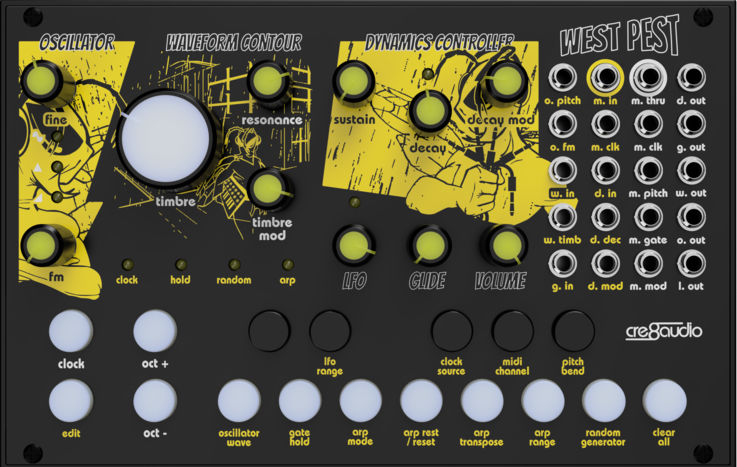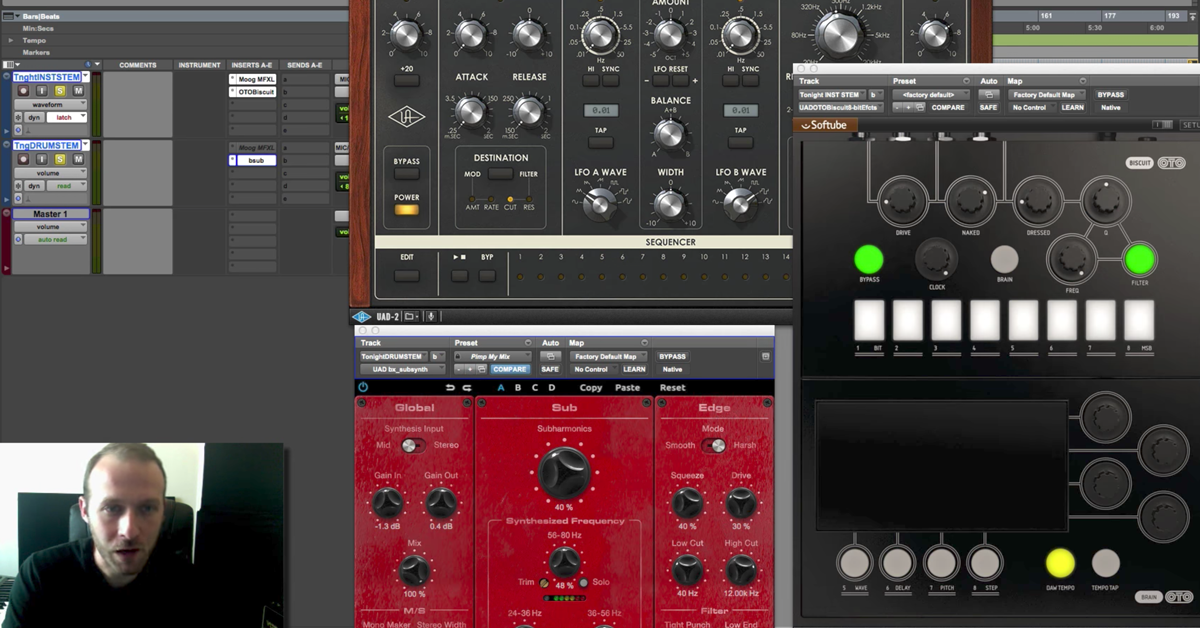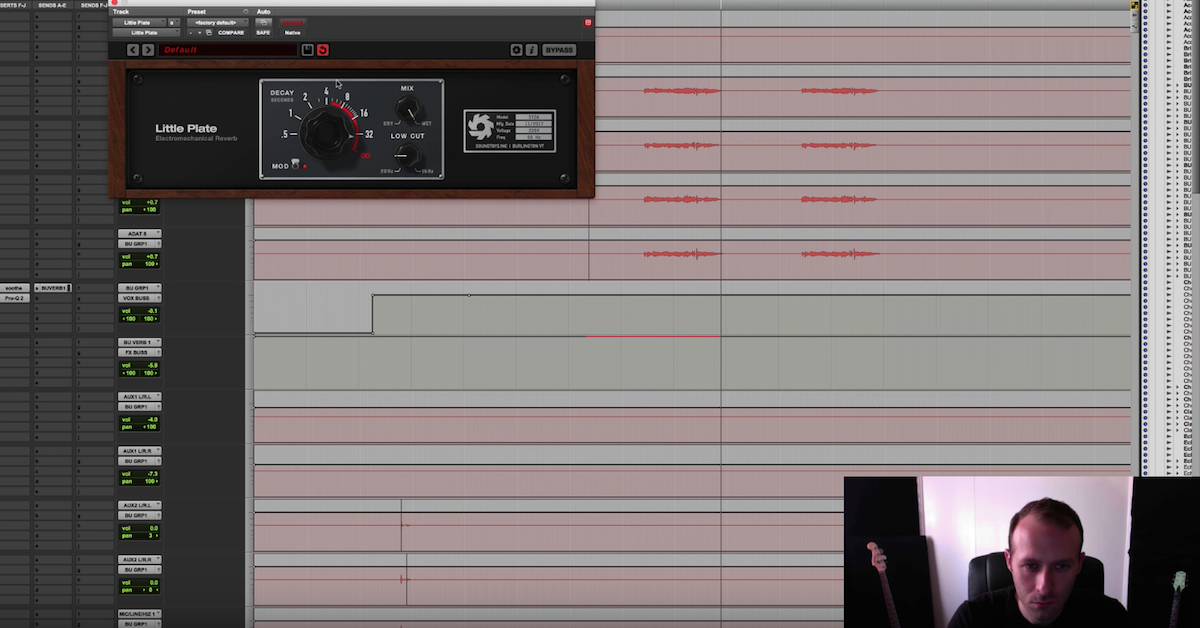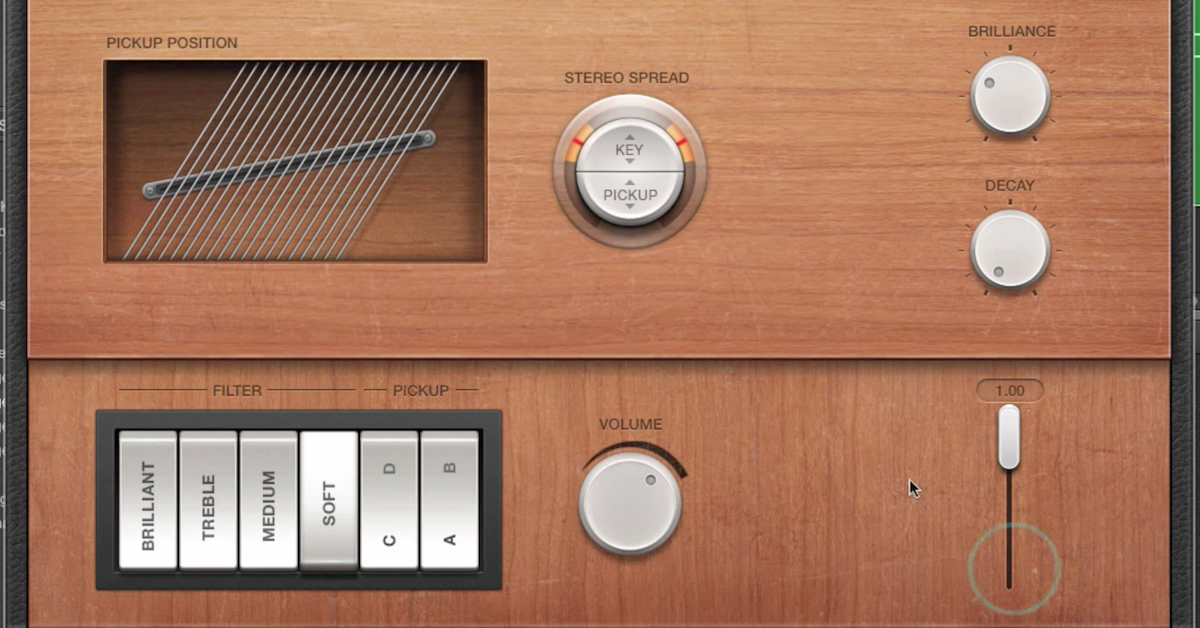17 Great Desktop Synths Under $1000
Article Content
It’s safe to say that every working producer has one or more MIDI controllers in their studio. While these can be used to drive software synths and automate parameters in the box, they can also control desktop synths, which are basically synthesizers without the keyboard. One major benefit of these boxes is their small footprint. You can have several devices at your disposal without cluttering your space with redundant keyboards. A good controller will typically have more keys and a variety of MIDI knobs and sliders that can be used to drive several devices simultaneously with some simple MIDI channel routing. With the resurgence of analog, now into its second decade, there have been many analog and hybrid devices introduced that can be driven via MIDI DIN or USB connectivity. Several semi-modular pieces allow you to change internal routing or interact with Eurorack modules while remaining independent instruments with their own power supply. Not only are these devices smaller, but they are less expensive than comparable instruments with onboard keys. With space and financial restrictions less of an issue, you are free to indulge your ever-expanding synth arsenal. What follows is a look at some of the best devices I’ve come across in recent years with a focus on the under $1k price range.
1. Mother 32 by Moog
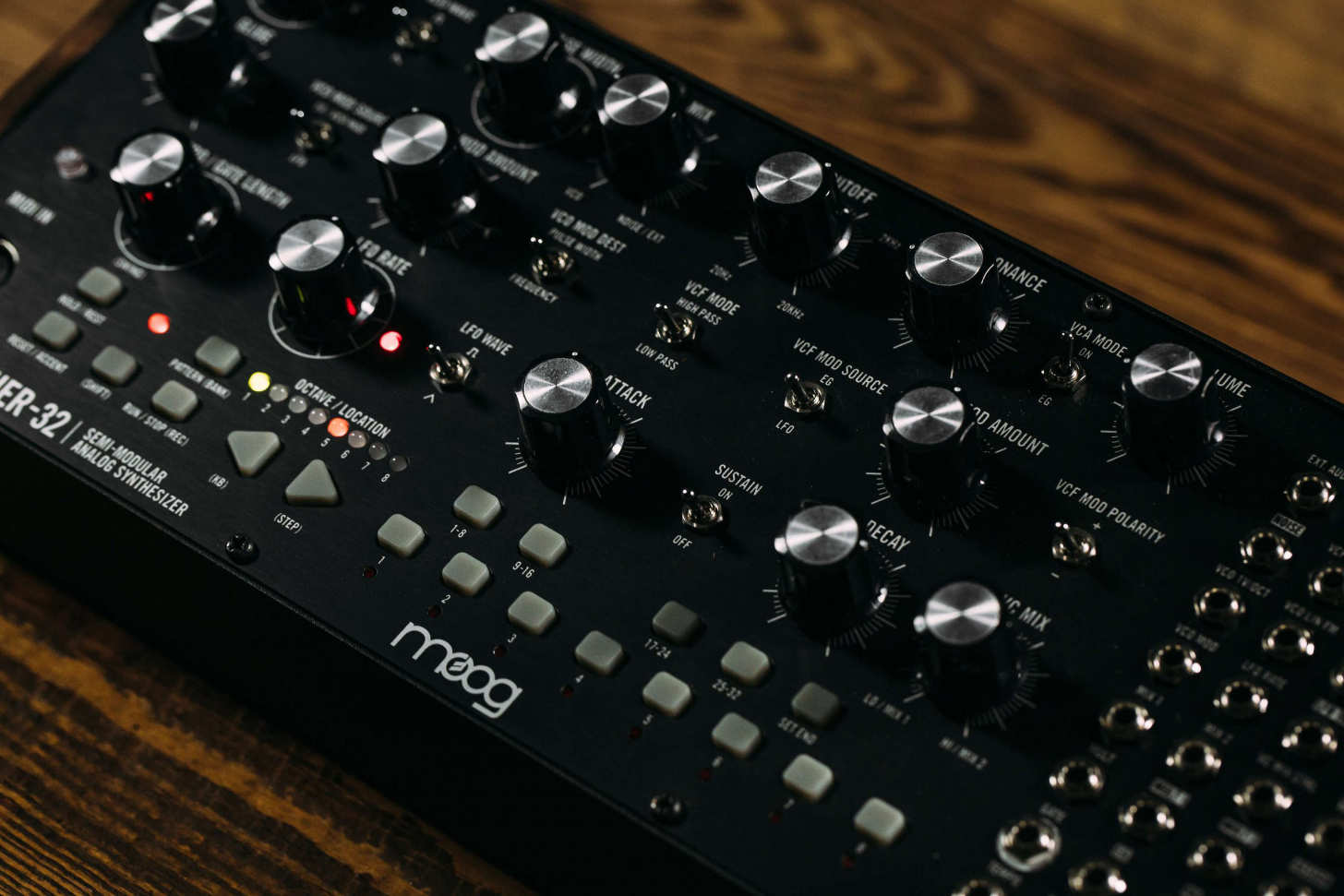
What can you say that hasn’t already been said about Moog gear? This particular piece was my gateway drug. It led me to dive deep into other desktop synths and eventually into modular gear. Compared to modern-day synths, this is a relatively simple semi-modular monophonic instrument. It has one oscillator with square and sawtooth wave choices, LFO and envelope modulators, an onboard sequencer, a bank of 3.5mm jacks for internal or external connectivity (Eurorack protocol), and it has the incredible Moog ladder filter that has been emulated in many other devices. This purely analog device has no preset capability and no USB connectivity, relying entirely on a MIDI DIN input or CV input for external control. But the sound is stunning and addictive.
2. DFAM by Moog
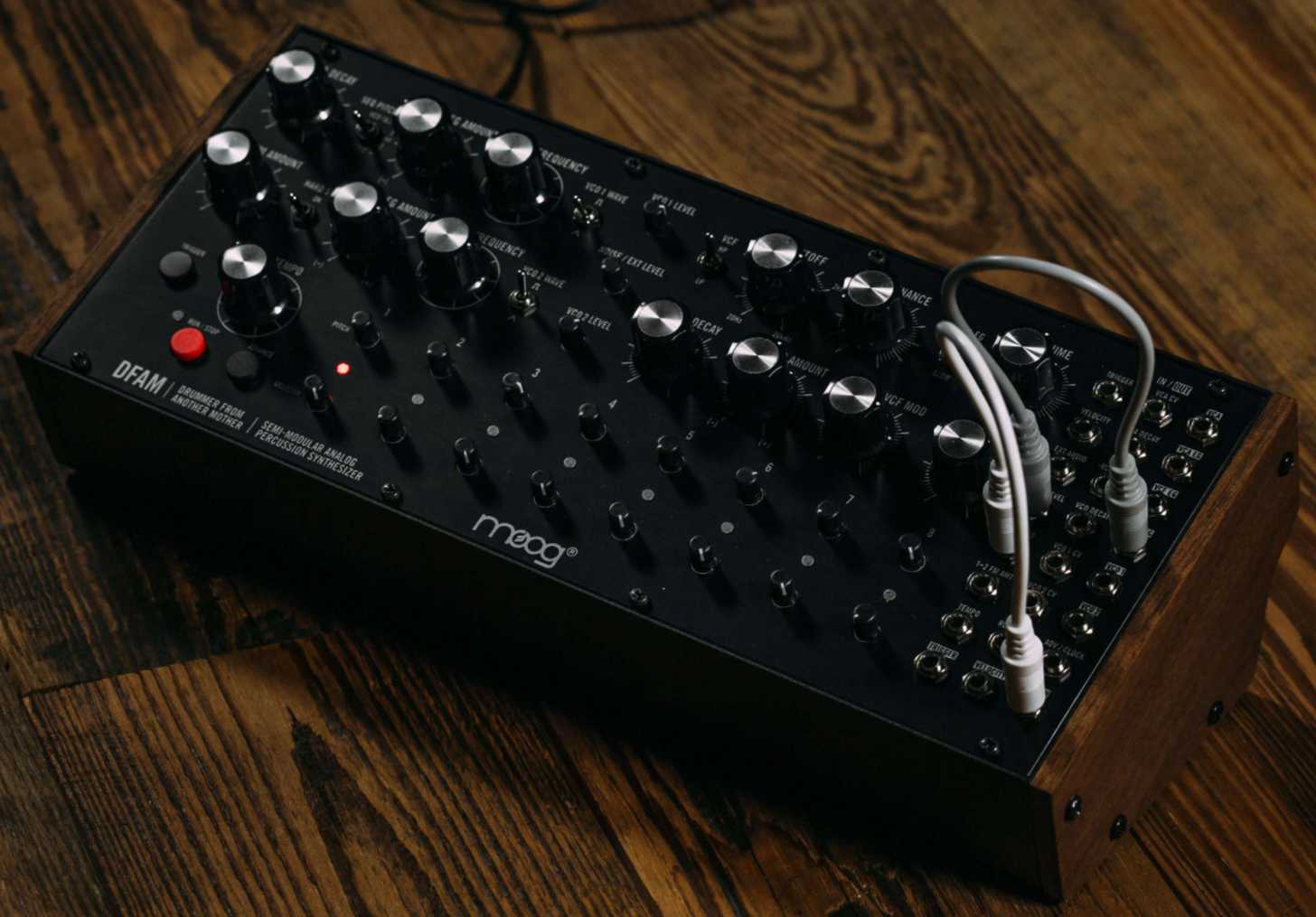
The DFAM (short for Drummer From Another Mother) is designed for creating rhythmic and percussive content. It has two VCOs (voltage controlled oscillators), filter and envelope controls, and there’s a very useable onboard sequencer with independent pitch and velocity controls on each step. There is also a patch bay similar to the Mother 32 that allows internal rerouting and external connectivity with Eurorack gear or other semi-modular devices. It comes with a unique set of physical templates that can be placed over the controls to indicate how parameters should be dialed in to achieve a particular sound — sort of like physical presets. While it would be impossible to swap between these things on the fly, they do provide good starting places if you’re after a particular type of sound.
3. Minitaur by Moog
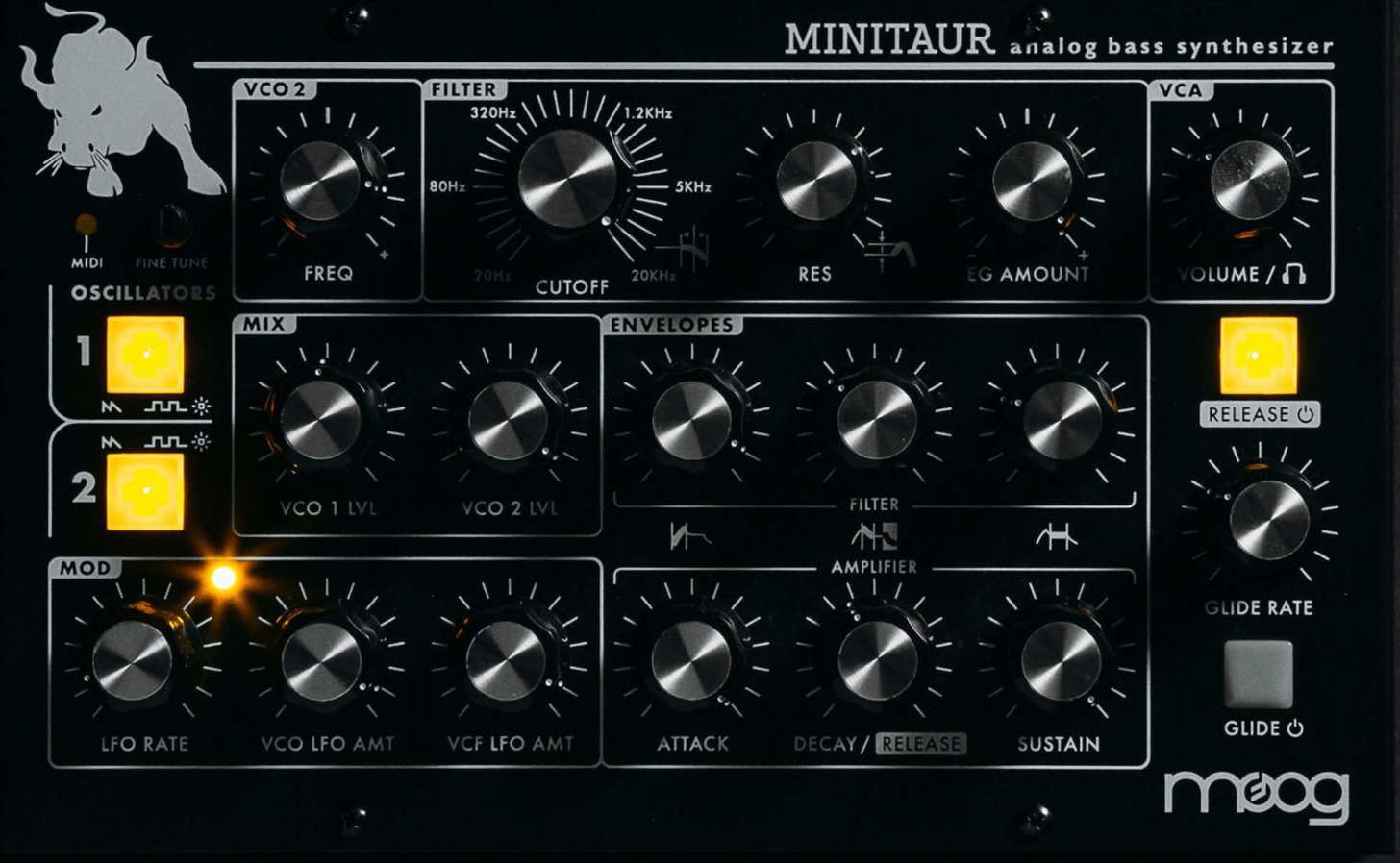
The Minitaur is an incredible little analog box designed for thick low end bass sounds. Not only does it have the highly-prized Moog filter, but this device can be controlled via MIDI DIN, USB or CV. With the Minitaur, a dedicated plugin can be used to access additional parameters and load or create presets. This additional level of control seamlessly bridges the gap between the digital and analog divide. With the possibility of presets, the tactility of physical controls and the rich sound of analog oscillators & filters, you can have the best of both worlds.
4. Minilogue XD by Korg
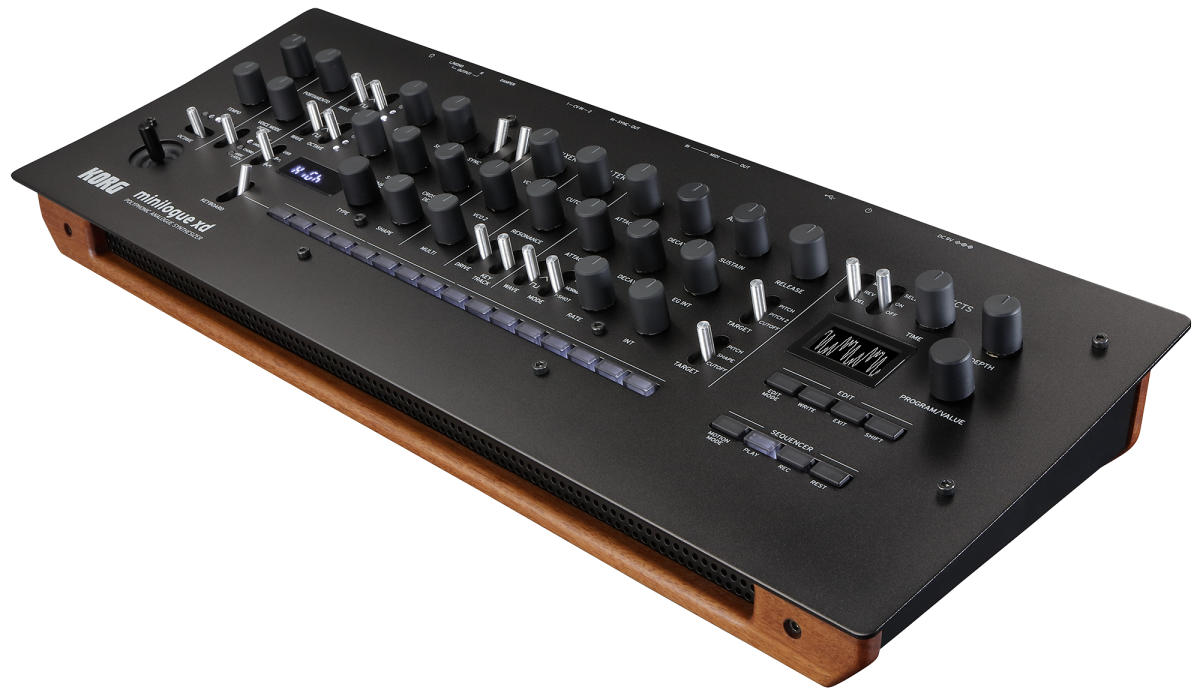
This device is a great-sounding polyphonic four-voice synth by Korg that is great fun to play. It has two oscillators and all the controls you’d expect in a subtractive synth: filter, envelope, waveform selectors — plus an onboard effect section and step sequencer. It allows for presets and the loading of third-party oscillators and effects. I especially like those available from Sinevibes, which has an extensive collection of oscillators and effects for the Minilogue. You can access the controls via software and there are a few third-party apps out there for this purpose. If you are a Max/MSP user like me, you can design your own software control app fairly easily. But the tactility and feel of the potentiometers and switches are very inviting, and it is easy to lose yourself for hours exploring the possibilities without any external control at all.
5. Lyra 8 Organismic Drone Synth by Soma Laboratory
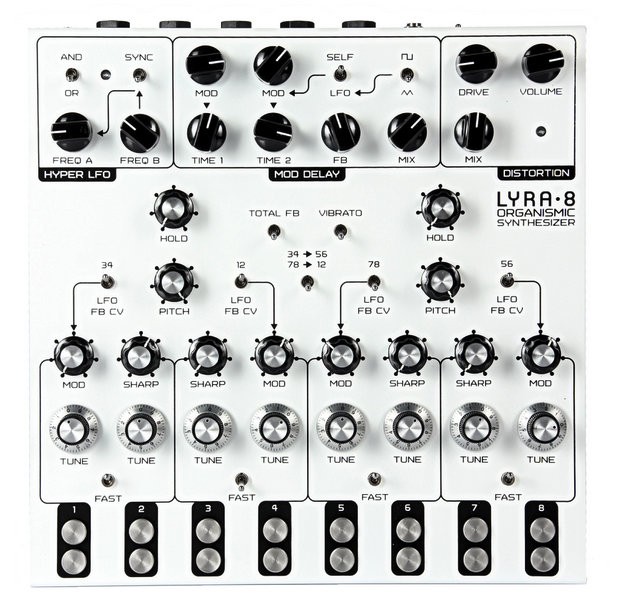
I reviewed this amazing and unusual device a few years ago and it remains a favorite of mine based on its tactile controls and somewhat unpredictable behavior. A main tenet in the philosophy of its creator, Vlad Kreimar, is to invite the user to listen and embrace a non-linear approach to synthesis. Read my review and interview with Vlad here.
6. The Witch by Rebel Technology
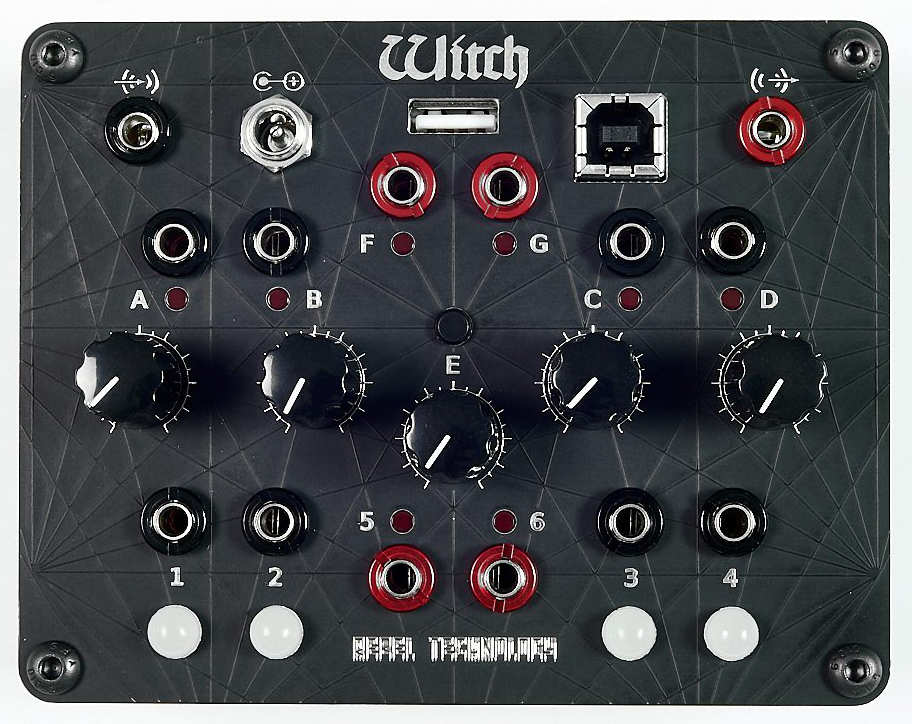
This a programmable synth in which you can download patches from a growing library, or you can program your own using DSP languages like Pure Data, Max Gen~, SOUL, Faust, Maximilian and C++. It features CV inputs and outputs for connectivity and four synth engines that include a virtual analogue synthesizer with a 48 dB resonant filter, a voice simulator formant synthesizer, a morphing wavetable synthesizer and a sampler with peak filter.
7. O-Coast by Make Noise
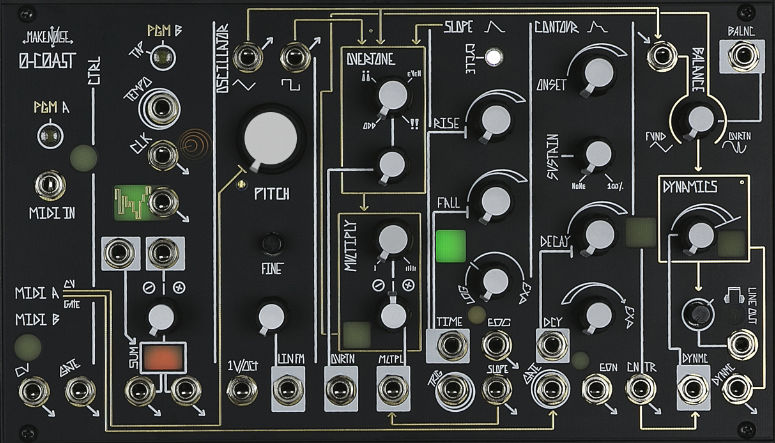
This is a semi-modular synth by a company renowned for their many awesome Eurorack modules such as Maths and Wogglebug. The premise behind the device combines the approaches of two people that pioneered the beginning of musical synthesis — Don Buchla on the West Coast and Robert Moog on the East Coast. Make Noise professes to be “loyal to neither,” and thus implements “no coast synthesis.”
8. Pulse 2 Analog Synthesizer by Waldorf
Those that are familiar with the Blofeld desktop will appreciate the elegant design of this all-analog synth. It sports three VCOs, CV i/o, an arpeggiator, an eight-slot modulation matrix and more. 500 presets should keep you busy for a while as you explore the possibilities.
9. Digitone Polyphonic Digital Synthesizer by Elektron
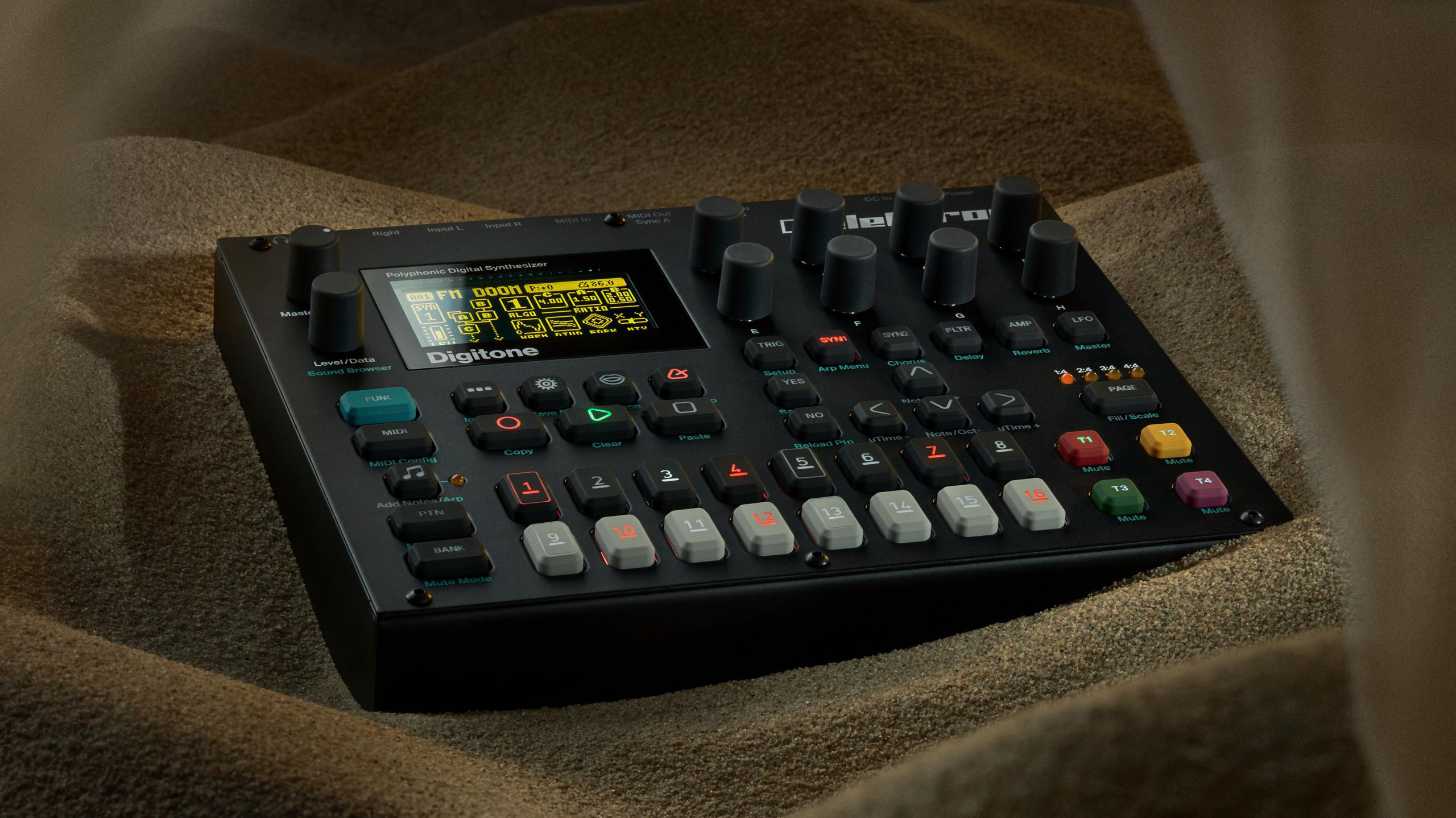
This beauty by Electron provides eight-voice capability in a digital desktop synth that provides FM synthesis. With four operators per voice, you can generate infinite FM-based sounds and then use the extensive filtering capabilities for subtractive synth effects. You can also tap into the onboard effects processing. There is a built-in sequencer and plenty of presets to toy with and manipulate.
10. Mono Lancet ’15 by Vermona
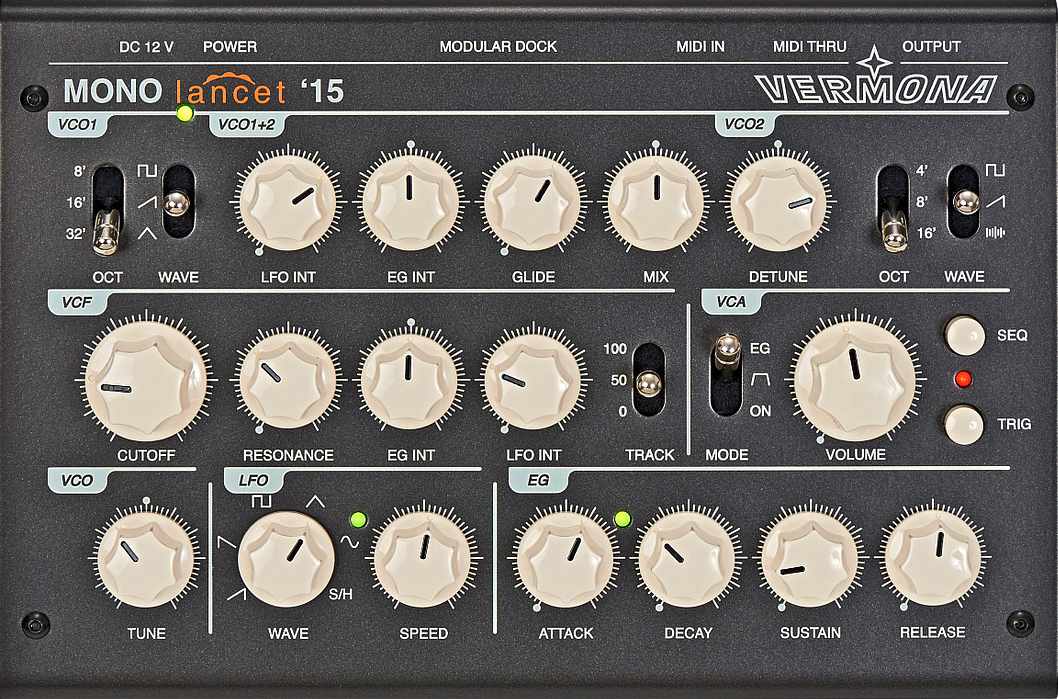
This is a monophonic analog desktop synth particularly great for bass. It relies on two VCOs and a noise generator as sound sources, and it has a warm lowpass filter used to sculpt the sound. The multi-pin connector on the back allows connectivity to their Modular Dock Eurorack module to expand the capability of the device.
11. TVCO-2 by JMT
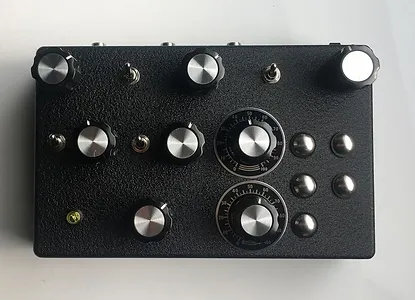
This cool little device is a full synth voice that includes a VCO, VCF and CV inputs for connectivity. The five touch sensors are a nice feature for live performance and manipulating pitch & routing. Also, have a look at the NOSC-12 Drone Synth. There’s lots of great noise-based stuff from this Japanese maker.
12. Mono by Norand
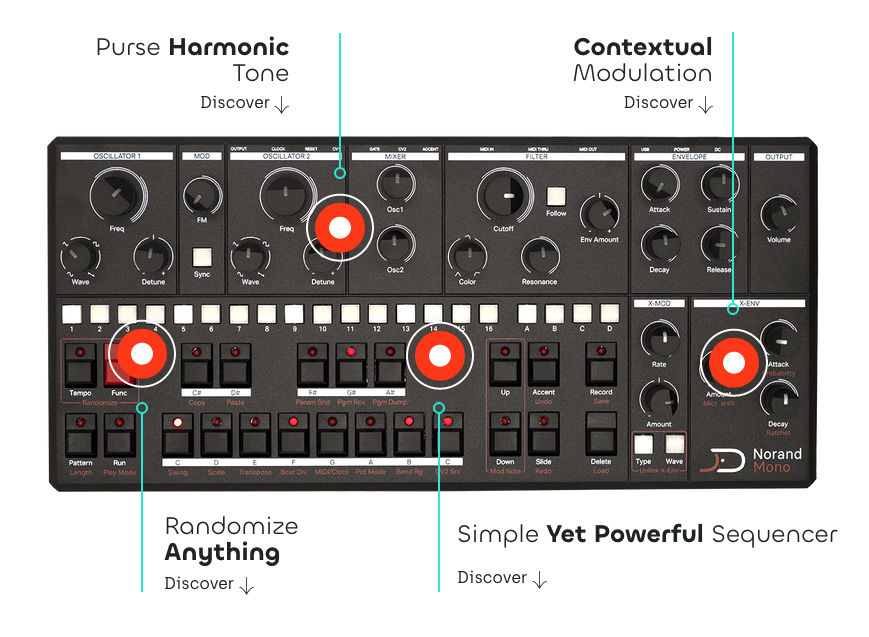
The Mono is a monophonic analog synthesizer with robust modulation features that can be mapped to any parameter. It has an onboard sequencer, two VCOs, a multimode three-pole filter, a powerful randomizer, CV i/o and more. Also have a look at their new Morphos with “3D morphing touch strips, three modulation types and the most stable Through Zero FM yet developed.”
13. Typhon Analog Synth by Dreadbox
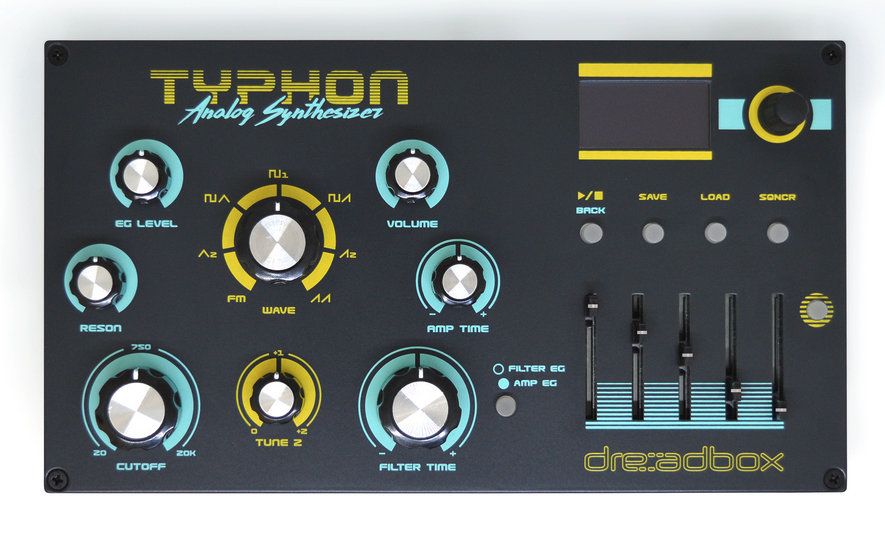
This device includes two VCOs, a four-pole LP filter, two envelope generators and three modulators with switchable sources (LFO, EG and step sequencer). It also has 12 on-board effects from Sinevibes that include distortion, bit crusher, chorus, ensemble, flanger, delay and reverb. I love Sinevibes as a great source for effects and oscillators for the Korg Minilogue XD mentioned above as well. If you are into DIY, have a look at some of the kits offered by Dreadbox as well.
14. Nanobox Lemondrop Granular Synthesizer by 1010 Music
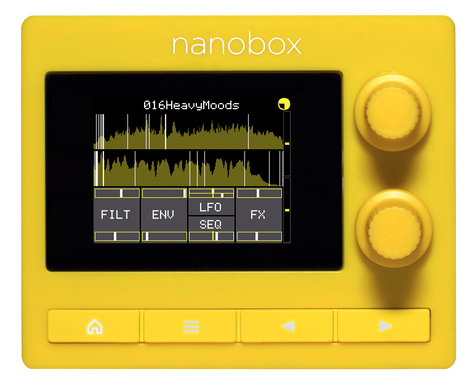
This bright yellow box from 1010 Music will definitely add some visual and timbral color to your synth array. It is a granular synth with four voice polyphony and two granulators. The touch allows for tactile control reminiscent of an iPad app. It has MIDI connectivity via 3.5mm jacks, a 30 second sample memory per oscillator and more.
15. Magma Analogue Bassline Synthesizer by Eowave
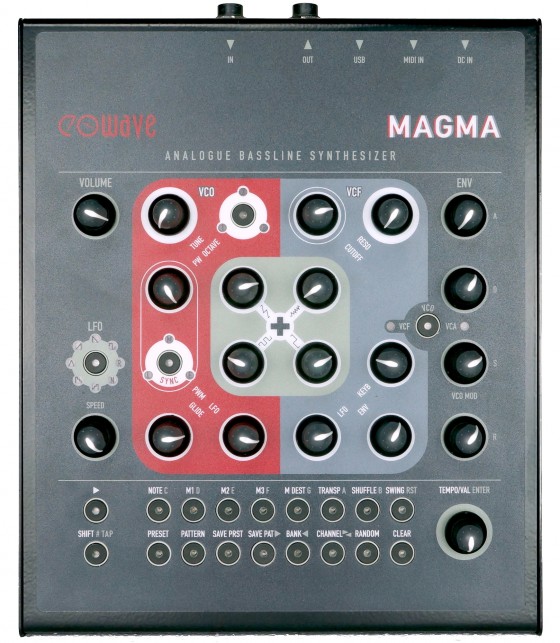
This is a monophonic bass synth inspired by classic 80s instruments. It sports a 24 dB LP filter and a 16-step sequencer with four rows, three of which are assignable for modulation. Although it uses analog circuitry for sound generation, it features the ability to save parameters as well.
16. West Pest Semi-modular Analog Synthesizer by Cre8audio
This semi-modular synth uses a West Coast synthesis approach designed in partnership with developers from Pittsburgh Modular. It uses a custom waveform folder to generate complex sonorities and rich timbres. It has all sorts of MIDI and CV connectivity and will integrate well with your existing system. It’s a great tool for live performance. Also, check out the East Beast for Moog-inspired synthesis.
17. Hydrasynth by ASM
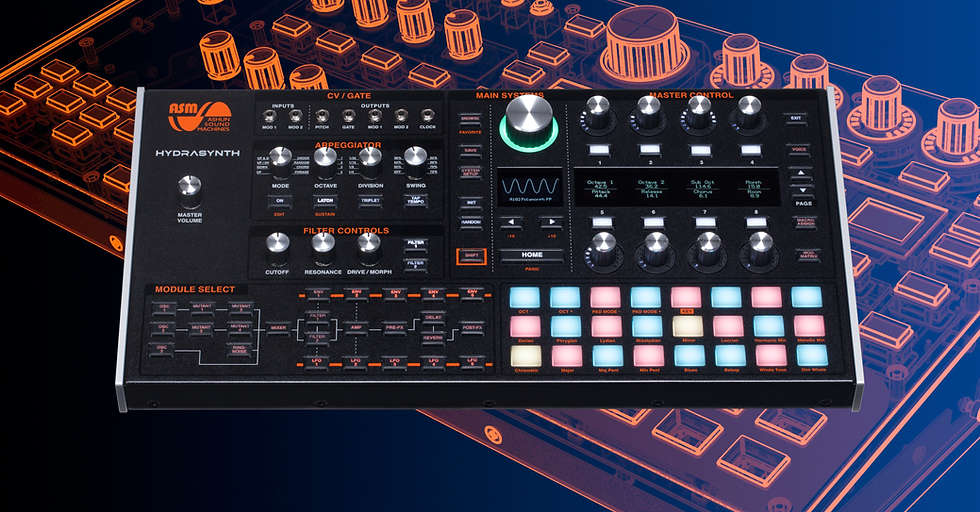
This is a full-featured eight-voice polyphonic synth with a robust sequencer section that includes swing control, octave and division settings, chord & random settings and more. Other notable features include seven wave shapers, five envelope generators, eight insert effects, 24 multifunction touch pads, 219 waveforms and eight macro controls. It uses a combination of wavetable synthesis, pulse wave modulation and subtractive synthesis. This one is ripe for experimentation.
Conclusions
You can’t go wrong with any of these boxes, but before you lay down your hard-earned cash you should consider what your needs are. Certain devices are made for experimenting on the fly and for generating serendipitous results, while others are designed to create repeatable sounds that can be recalled. Do you need an arpeggiator or step sequencer on board? What about connectivity with your existing gear? Do you plan to perform live or are you looking for a strictly in-studio device? You should also be aware that some of the smaller developers produce limited production runs, so availability is sometimes an issue. Whether you are an analog purist or want the convenience and features of digital circuitry, there is something for everyone. As we all know, you can never have enough synths!
Check out my other articles, reviews and interviews
Follow me on Twitter / Instagram / YouTube

